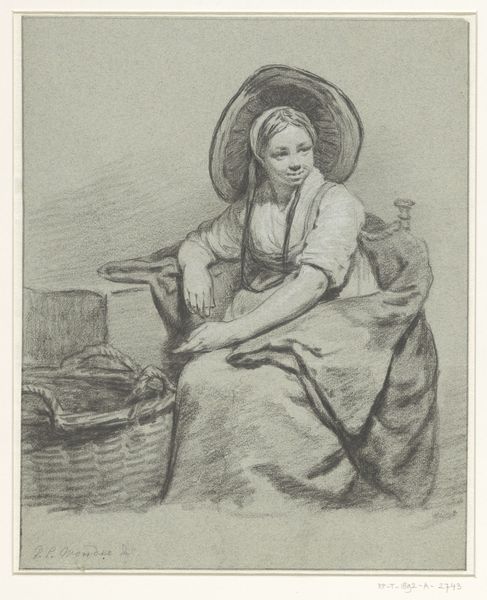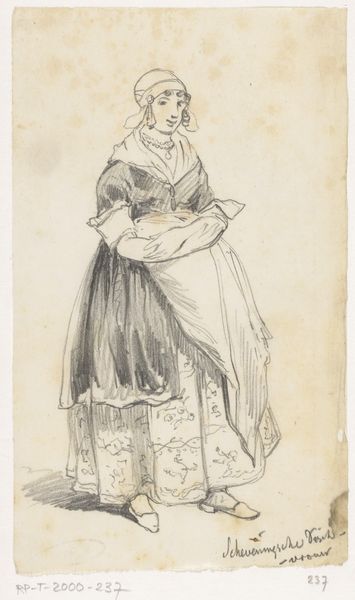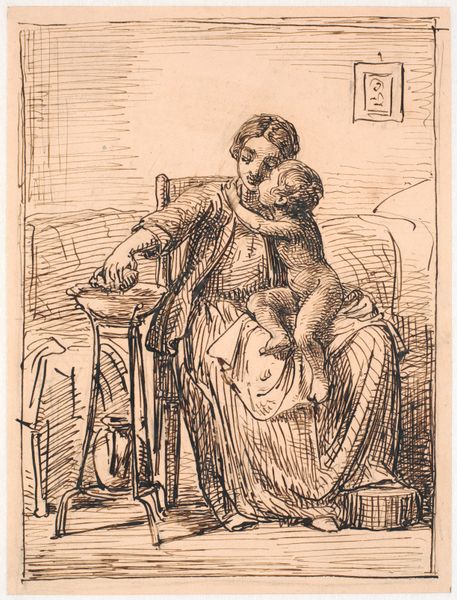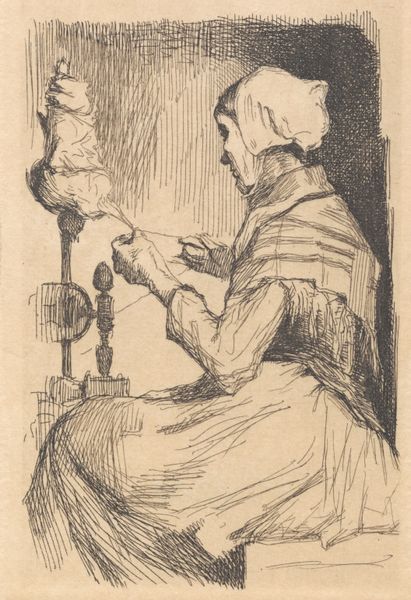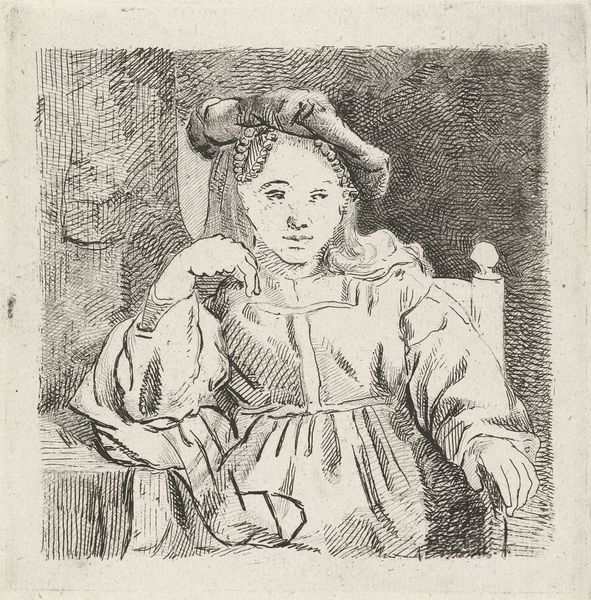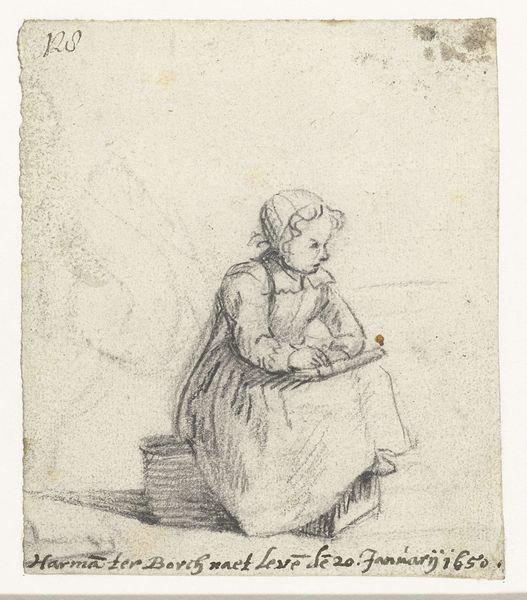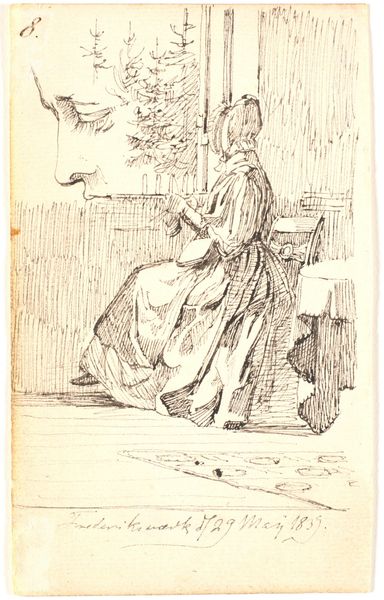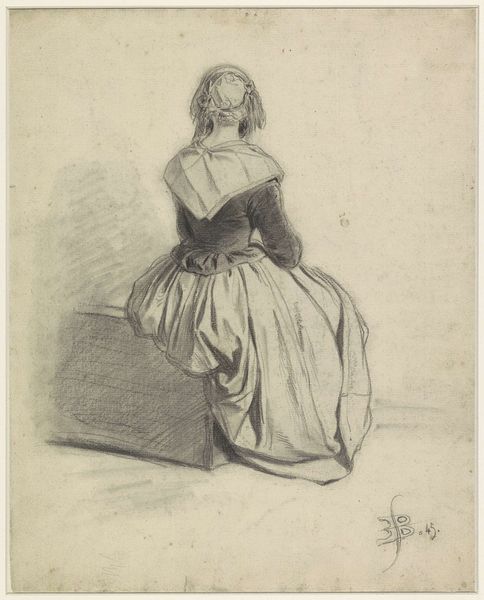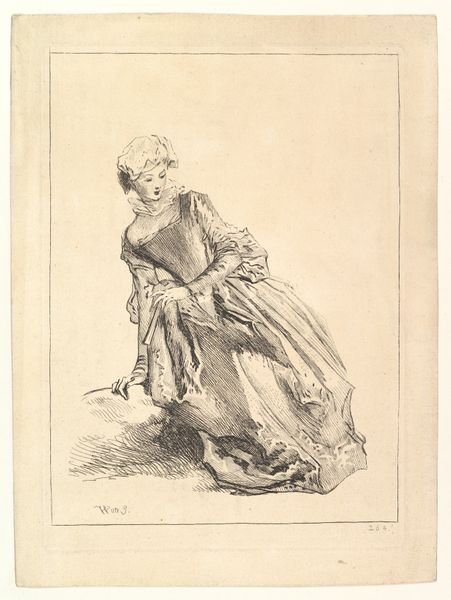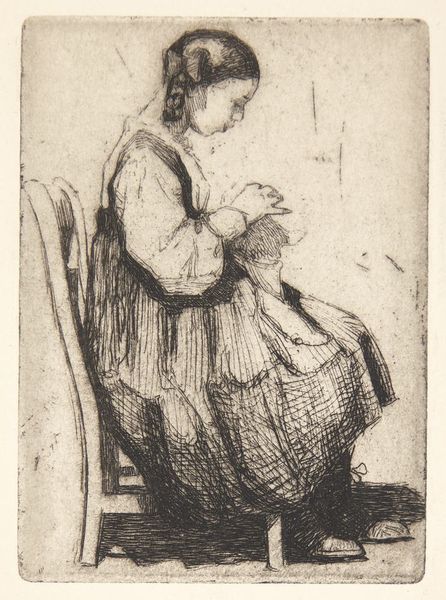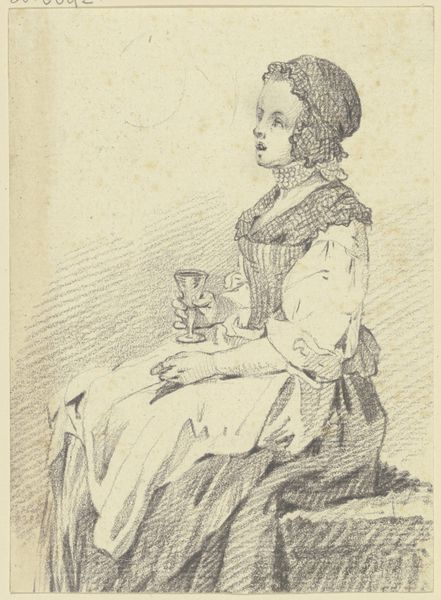
drawing, paper, chalk, graphite
#
portrait
#
drawing
#
paper
#
chalk
#
graphite
#
genre-painting
#
realism
Dimensions: 211 × 148 mm
Copyright: Public Domain
Curator: Isn’t she captivating? I find this unassuming work incredibly moving. We’re looking at Jean-Baptiste-Siméon Chardin’s "Girl Eating Cherries," a chalk and graphite drawing, date unknown, but full of quiet beauty. Editor: Absolutely. It’s immediately striking how self-contained she is, almost melancholy. The muted tones and her downcast eyes give off a very introspective vibe. There's such simple stillness, though, especially given the period! Curator: Yes, and for Chardin, this kind of intimate genre scene was everything. Unlike many artists of his time, he largely turned away from the grand historical paintings and allegories favored by the aristocracy. He was interested in capturing the small, beautiful moments of everyday life. How… radical is that? Editor: Radically relatable, actually! One wonders about the cultural shift occurring that enabled Chardin to create works depicting middle-class life. Certainly the patronage for art-making and tastes for art-viewing had to come from a broadening base of citizens, correct? Curator: Exactly. It speaks to a shift in societal values, a growing appreciation for the domestic sphere. But, look at her dress, its folds suggested with such economy! The chair, the basket… He's able to create this whole little world with such seemingly simple means. Almost as though he himself sees these spaces with such tenderness. It's a light drawing, but there's such depth within. Editor: Indeed. There's a certain naturalness to it. He clearly studied her form and dress—though it's rendered so sketchily, almost conversationally. Consider that his drawings such as this would circulate for years to come via reproduction technologies such as engraving. His audience base spread across Paris, all clamoring for genre paintings and realistic art depictions of everyday people. This aesthetic spread through artistic practices of Europe over decades that followed! Curator: Oh, for sure. The piece transcends its own time, and really whispers across the centuries! Chardin, in his own quiet way, makes the viewer appreciate that pause in an otherwise likely fast and changing world. Editor: It certainly provides some fodder for us to sit with now and appreciate still today. Well put.
Comments
No comments
Be the first to comment and join the conversation on the ultimate creative platform.


